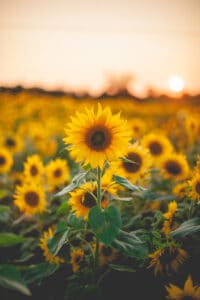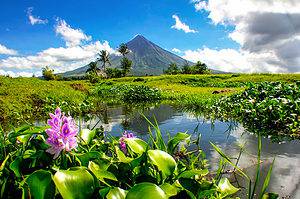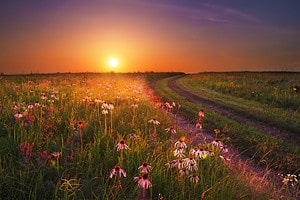Lavender is a very popular shrub with a knockout relaxing scent. Humans have used this aromatic plant for thousands of years as ornamental garden shrubs, food, and medicine. It’s still popular today! Let’s take a closer look at lavender to discover if lavender is a perennial or annual and how to grow it.
Lavender: Perennial or Annual?
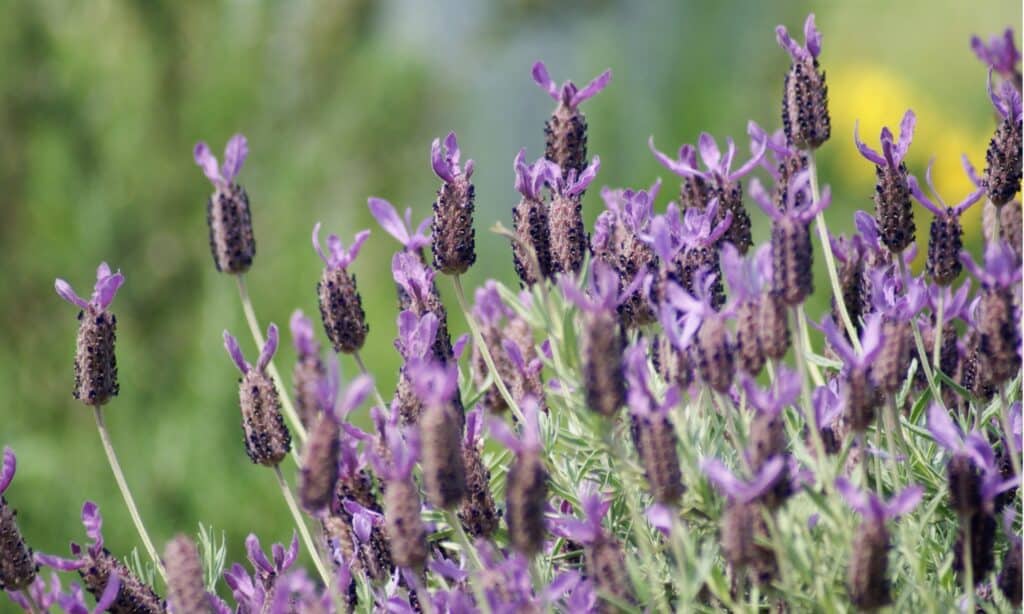
Lavender is a perennial plant that returns each year producing blooms and new growth in the summer.
©iStock.com/htmSana
Lavender is a perennial plant that comes back each year. It’s native to the Mediterranean and other hot arid areas. Lavender needs hot, dry conditions with well-drained roots. Some folks plant it in soil that’s too soggy, so it dies over winter. That may explain the question mark over whether lavender is perennial or annual.
In its native habitat and well-drained soil, lavender is a perennial that produces blooms and new growth each summer.
What Is Lavender?
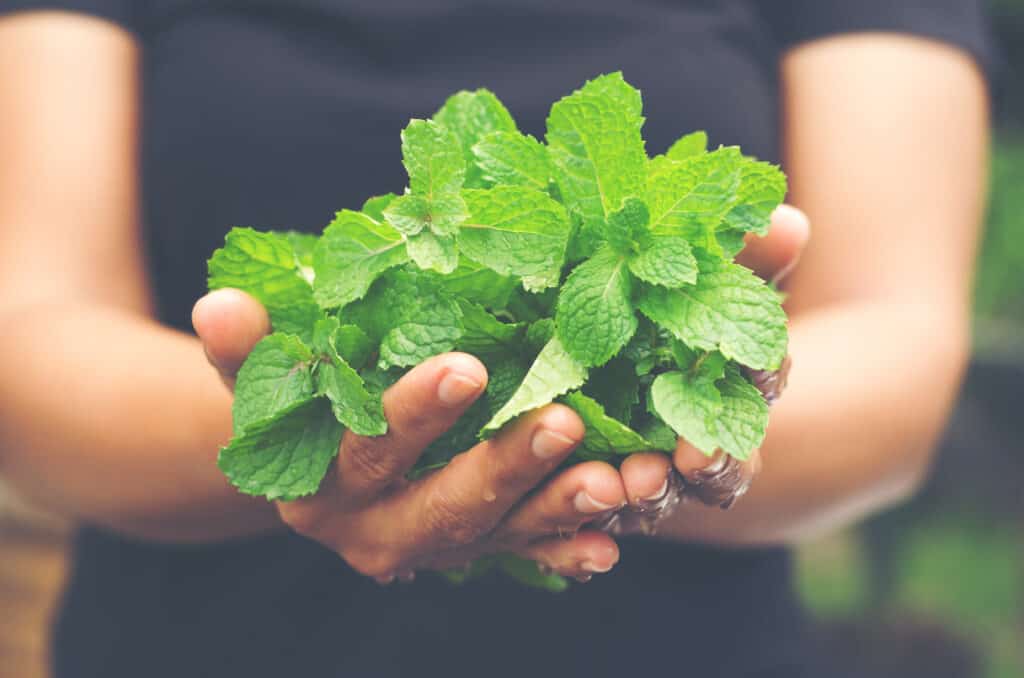
Lavender is a member of
Lamiaceae, commonly known as the mint family.
©Cat Act Art/Shutterstock.com
Lavender is a woody perennial subshrub. Its scientific name is Lavendula and it’s surprisingly a member of the Lamiaceae mint family!
There are 47 known species spread across the northern hemisphere including Asia, Africa, and Europe. The most commonly grown is English lavender Lavandula angustifolia. French lavender is also popular, although less hardy.
Lavender leaves are usually pinnate and covered in fine hairs. The flowers are whorls atop spikes held above the foliage clump. Lavender flowers range from blue, purple, and lilac, but botanists have bred many cultivars over hundreds of years so white and pink lavenders are available too. The easiest way to identify a lavender shrub is its scent. Lavender’s scent is soothing and unmistakable.
Why Lavender Is A Useful Plant
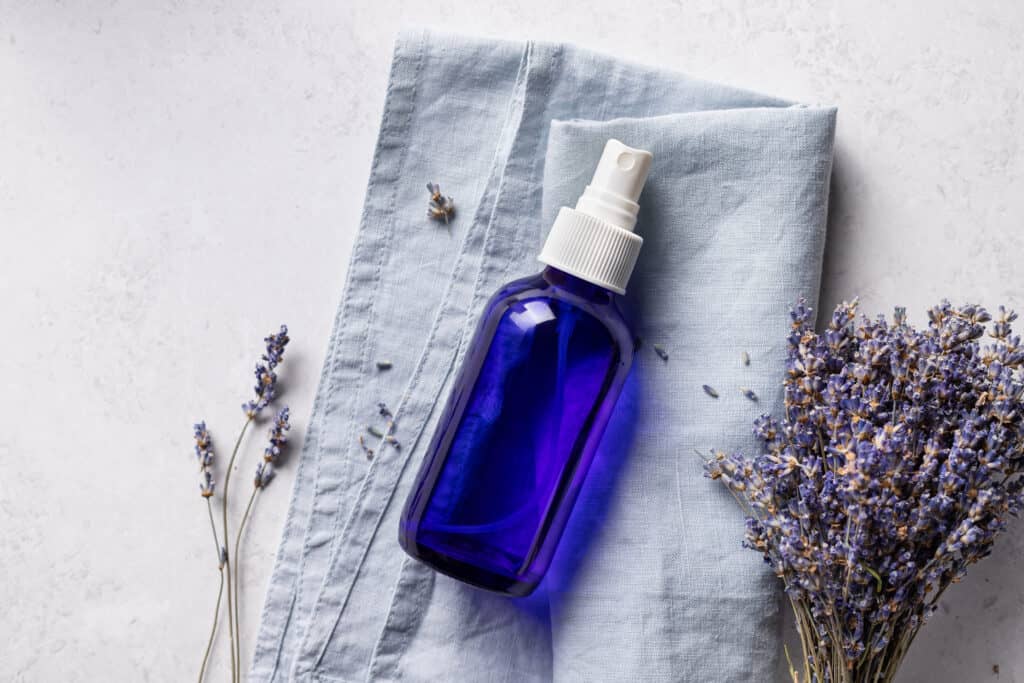
Lavender is a useful plant in everything from cooking to cleansing and it can even enhance mood with its soothing scent.
©Mila Naumova/Shutterstock.com
Lavender is used today for medicine, essential oils, cooking, and as an ornamental aromatic garden shrub. It has a long history alongside humans.
Researchers think the name lavender is from the French lavandre which means wash. Over history, lavender has been used to freshen clothes and deter lice. However, some argue it’s from the Latin livere for blue which refers to its flowers.
Ancient civilizations including Greeks, Roman, Chinese, and Africans have used lavender to their advantage for thousands of years. According to written records, it was brought to England in the 1600s however some scholars suggest the Romans brought it with them in the 1st Century.
Lavender was taken to Australia and the Americas by the first settlers and has become naturalized. In Australia Lavandula stoechas is a problem environmental weed.
Is Lavender A Plant or a Color?
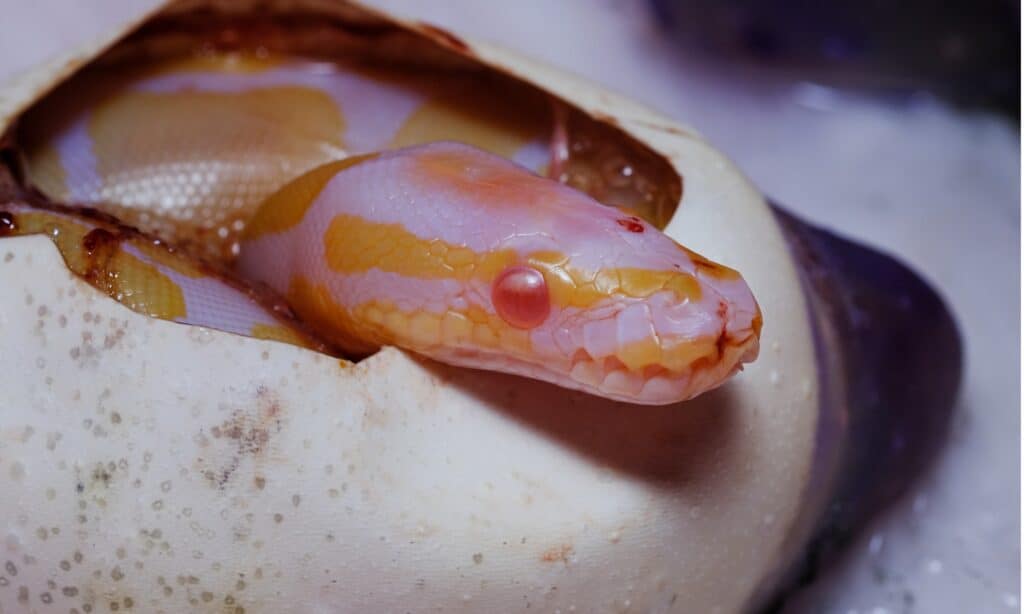
Lavender albino ball pythons have a lavender hue to their skin that deepens over time.
©iStock.com/Suriyapong Koktong
The flowers of English lavender (the lavender used for cooking) are so popular they’ve given rise to a color name! The lavender color is named after English lavender flowers.
Did you know there’s even an animal named after the lavender color? The Lavender Albino Ball Python (python regius) has a blue-purple tint to its white areas.
What Is A Perennial Plant?
Perennial plants live for more than two years. They can be evergreen or deciduous (they die back each winter) but will re-emerge in their season of interest.
What About An Annual?
Annual plants are grown from seed each year and die at the end of the summer. There are also biennials that live for two years. Biennials germinate in year one, then flower, set seed, and die in year two.
Does Lavender Come Back Every Year?
Yes, lavender is perennial not annual, so it comes back each year, but only if it’s grown in well-drained soil. Lavender will rot and die in soggy soil and extreme cold temperatures. That’s why some people think lavender is an annual.
Some species are hardier than others. For example, English lavender is tougher than French lavender. As long as the roots are dry during winter English lavender can withstand minus temperatures.
Lavender Growing Zones
Lavender does well in the dry west but struggles in the high humidity of the south. The toughest lavender is English lavender Lavendula Angustifolia. This species can cope with minus 20 degrees with well-drained roots! It’ll grow in Zone 5 through to 8. Spanish lavender and French lavender species are more delicate. They will grow in zones 7-9.
A good tip in humid areas is to surround lavender roots with stones and only water the roots.
How To Cut Back Lavender
When the flowers are spent, cut the stems back to leaf height and they may regrow. At the end of summer, trim back new foliage growth, but don’t cut into old wood because it doesn’t regenerate.
Lavenders are fairly short-lived After a few years they can look woody and scraggy. For the best scent and flower display gardeners often replace them every 5-7 years.
How To Dry Lavender Flowers
If you have a lavender plant, there is no need to buy room fragrance. Cut flowers and foliage can easily be dried by hanging long stems up in a cool dry place until they are desiccated. Check every few days for mould.
Spread shorter pieces across a kitchen towel and let them dry out completely. Some people like to sew dried lavender into fabric pockets. These work well under a pillow to welcome a peaceful sleep.
Where Is The Best Place To Plant Lavender?
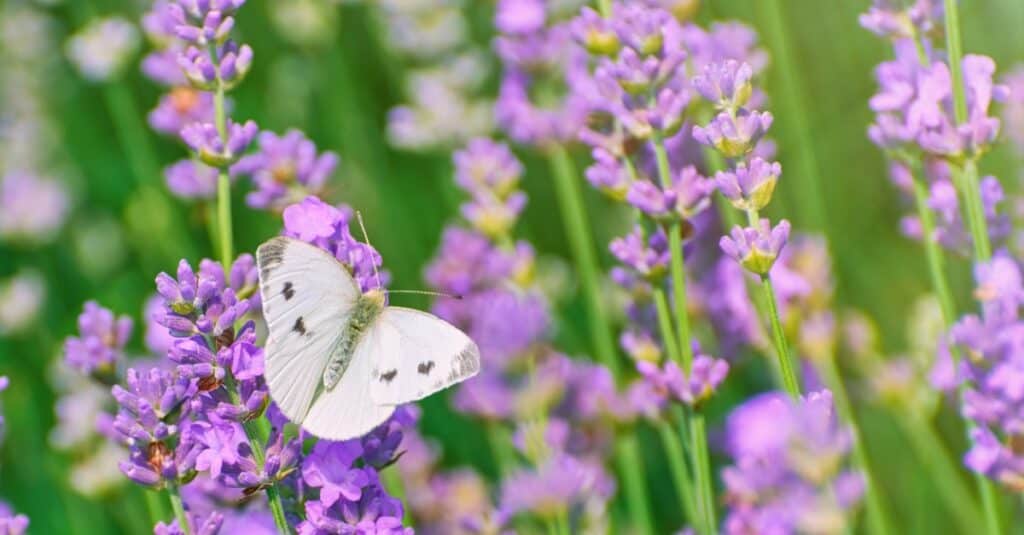
Lavender grows best in well-drained soil in full sun.
©iStock.com/Rocter
Lavender needs full sun and well-drained soil to remain a natural perennial. Chalky or sandy soil is suitable. In full sun with well-drained roots, lavender will produce many fragrant flowers and oily leaves. Pollinators adore lavender, especially bees. It’s an excellent plant for a wildlife-friendly garden.
Containers and pots are also good places to grow lavender. Raise the pot on bricks to ensure really good drainage.
When lavender is first planted it needs frequent water, but once new growth emerges it rarely need any. Because lavender is so drought tolerant it’s a good plant for water-restricted areas and forgetful gardeners!
How To Take Lavender Cuttings
Lavender is very easy to grow from cuttings and is often preferable because the seeds can take up to 100 days to germinate depending on the species! Cultivar seeds often produce the parent plant. If you want an exact replica, it’s best to take a cutting. There are two ways:
Softwood Cuttings
In early to mid-summer cut a piece of soft new growth. Cut it just above a leaf joint and remove leaves from halfway right down to the cut section. Push it into a damp pot of gritty compost making sure it’s the right way up!
Keep its compost damp, but not wet, and you’ll see new growth in a month or so.
Hardwood Cuttings
After flowering (late autumn) cut a length of hardwood. This should preferably be new season growth as this takes faster than old season wood. Strip off leaves on the bottom half, then push it into damp gritty compost. Keep it damp. In spring, new growth will sprout.
Is Lavender Toxic to Cats And Dogs?
Perennial lavender contains linalool and linalyl acetate, two compounds that are toxic to dogs, cats and horses. However, there are such small amounts in lavender that an animal would have to eat a very large amount to get sick.
In Dry Areas Lavender Is A Perennial!
Lavender is naturally a perennial plant, not an annual.
The problems occur when it’s grown in soggy soil and low temperatures. If it’s too wet and cold lavender will die in the winter months.
Up Next
The photo featured at the top of this post is © iStock.com/igoriss
Sources
- Drugs.com, Available here: https://www.drugs.com/npp/lavender.html
- M. G. Kains, Available here: https://www.gutenberg.org/files/21414/21414-h/21414-h.htm#Page_97
- RHS, Available here: https://www.rhs.org.uk/plants/lavender/growing-guide
- ASPCA, Available here: https://www.aspca.org/pet-care/animal-poison-control/toxic-and-non-toxic-plants/lavender
Thank you for reading! Have some feedback for us? Contact the AZ Animals editorial team.



